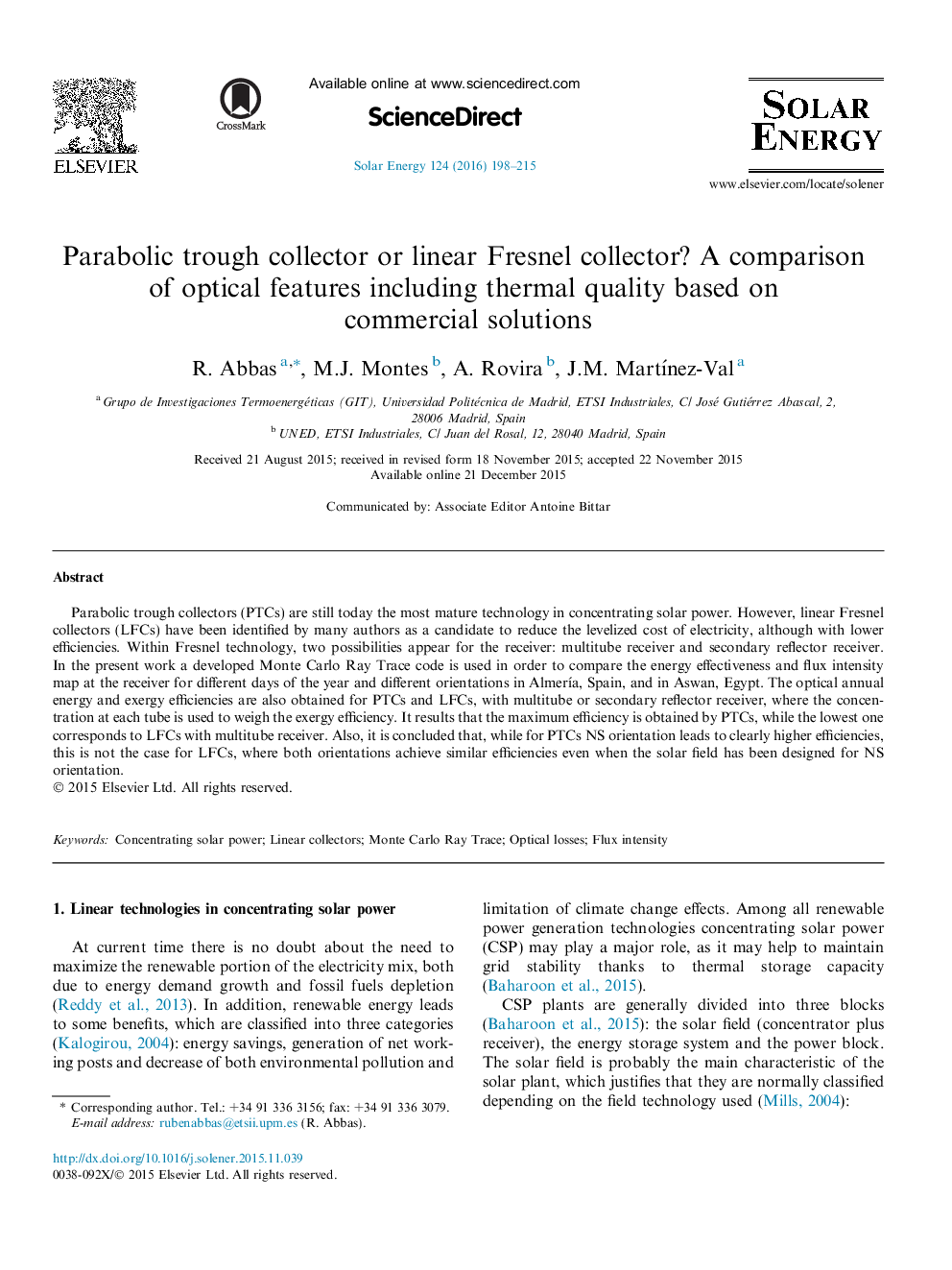| کد مقاله | کد نشریه | سال انتشار | مقاله انگلیسی | نسخه تمام متن |
|---|---|---|---|---|
| 1549451 | 1513094 | 2016 | 18 صفحه PDF | دانلود رایگان |

• LFCs with secondary reflector receiver achieve higher concentration factors than PTCs.
• Central tubes of LFCs with multitube receiver achieve similar concentration than PTCs.
• Annual efficiency of PTCs is higher than such of LFCs, for any receiver technology.
• Annual efficiency of multitube LFCs is lower than for secondary reflector receiver.
• Main losses of multitube LFCs are due to low flux intensities during some periods.
Parabolic trough collectors (PTCs) are still today the most mature technology in concentrating solar power. However, linear Fresnel collectors (LFCs) have been identified by many authors as a candidate to reduce the levelized cost of electricity, although with lower efficiencies. Within Fresnel technology, two possibilities appear for the receiver: multitube receiver and secondary reflector receiver. In the present work a developed Monte Carlo Ray Trace code is used in order to compare the energy effectiveness and flux intensity map at the receiver for different days of the year and different orientations in Almería, Spain, and in Aswan, Egypt. The optical annual energy and exergy efficiencies are also obtained for PTCs and LFCs, with multitube or secondary reflector receiver, where the concentration at each tube is used to weigh the exergy efficiency. It results that the maximum efficiency is obtained by PTCs, while the lowest one corresponds to LFCs with multitube receiver. Also, it is concluded that, while for PTCs NS orientation leads to clearly higher efficiencies, this is not the case for LFCs, where both orientations achieve similar efficiencies even when the solar field has been designed for NS orientation.
Journal: Solar Energy - Volume 124, February 2016, Pages 198–215